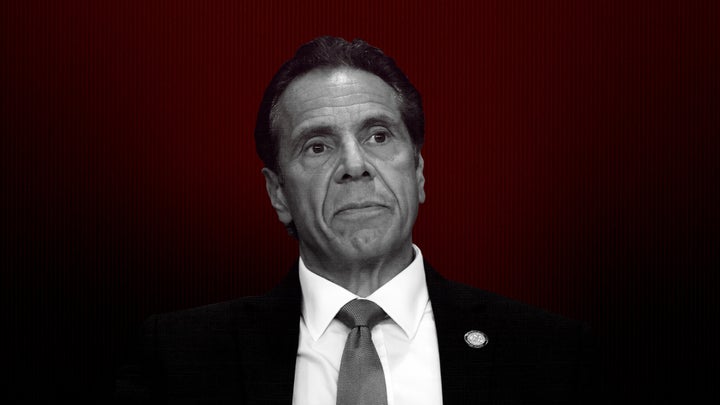
New York has given out over 4.7 million shots of the COVID-19 vaccine since the rollout began late last year. Since the very first dose was administered to a nurse in Queens, eligibility for receiving the vaccine has broadened from front-line health care workers and people living and working in congregate settings to anyone over the age of 65 or with certain common comorbidities, like asthma or obesity.
But there is one high-risk group of New Yorkers who have not yet been prioritized for vaccination: people incarcerated in the state’s prisons and jails.
The current vaccine distribution plan allows shots for residents of all adult congregate facilities as defined by the state (among them, nursing homes, homeless shelters and treatment centers for drug addiction) ― except correctional facilities.
As a result, only a tiny fraction of the more than 45,000 people currently incarcerated in New York’s jails and prisons have been offered the vaccine.
Fresh on the heels of a scandal over his handling of nursing home deaths, Gov. Andrew Cuomo is now under mounting public pressure to protect incarcerated people. Public health experts and criminal justice advocates say the governor’s vaccine rollout has put inmates and staff in danger, violates his pledge to ensure fairness in the distribution of the doses, and exacerbates racial disparities. Critics worry that the state still does not have a concrete plan for the vaccination of everyone behind bars.
A handful of legal aid groups are currently suing Cuomo and the state health commissioner, Howard Zucker, for refusing to vaccinate incarcerated people. Brought on behalf of two men held on Rikers Island, the lawsuit, filed on Feb. 4, argues that the vaccine distribution plan ignores medical expertise and draws arbitrary distinctions between residents of correctional facilities and those in other congregate settings that serve no public health purpose.
The lawsuit asks that New York expand vaccine eligibility to all people behind bars as a matter of equal rights.
“It’s arbitrary, irrational and it violates incarcerated people’s right to equal protection under the Constitution,” said Libby Fischer, an attorney with Neighborhood Defender Service of Harlem, which brought the lawsuit.
In New York, it is unknown exactly how many incarcerated people have contracted COVID-19 or succumbed to the illness, as comprehensive data is lacking.
In the state prison system, which houses over 32,000 people, nearly 6,000 have been diagnosed with the coronavirus and 33 have died. In New York City jails, which currently hold 5,512 people, over a thousand people have tested positive and three have died in custody. The number of incarcerated people who have fallen sick with the coronavirus in jails outside of New York City is unknown.
When Is A Congregate Setting Not A Congregate Setting?
The virus thrives in crowds. And people living in group settings like prisons ― where people eat, bathe and sleep in shared spaces ― can’t generally rely on public health measures used by the general public to stay safe, such as socially distancing and wearing masks around others.
When New York began its vaccine rollout, the state prioritized people in congregate settings. In Phase 1a, residents and staff of certain group living facilities, including nursing homes, treatment centers for addiction, and facilities for people with developmental disabilities, were eligible for the vaccine.
In Phase 1b, begun on Jan. 11, residents and staff at group homeless shelters were added to the pool. Correctional staff were also deemed to be eligible, but residents of correctional facilities were not. The Centers for Disease Control and Prevention recommends that inmates and correctional officers get vaccinated at the same time.
“We were horrified when the guidelines came out to see that incarcerated people weren’t contemplated while all these other congregate settings were,” Fischer said. “They have never offered any rationale for why they did that.”
Since the pandemic began, correctional facilities have suffered some of the biggest outbreaks in the country. An estimated 392,033 incarcerated people have gotten sick with the virus and at least 2,391 have died, according to data collected by the COVID Prison Project.
Cuomo has said that the state’s vaccination distribution plan is designed to be equitable and driven by science. Among its 10 guiding principles is a pledge to rely on public health guidance and to prioritize people at higher risk of exposure, illness or poor outcome. “Unrelated factors, such as wealth or status, will not influence distribution,” the guidelines read.
These promises have been broken, Fischer said. “If you look at all of that guidance, incarcerated people should be at the top of the list.”
The state also said it would take into account the disparate impact of COVID-19 on communities of colors, she added. “Cuomo has said that they’re concerned about the racial justice issues surrounding vaccine rollout and accessibility,” she said. “The people in New York’s jails and prisons are overwhelmingly from Black and brown communities, and it’s a moral imperative that they have immediate access to the vaccine.”
On Jan. 12, people 65 and older became eligible to be vaccinated, which in theory included incarcerated individuals. But the state did not begin inoculating older individuals in its prisons until more than three weeks later ― the same day the lawsuit was announced.
So far, 822 people in state prison who were eligible due to age have been given the vaccine, according to the New York State Department of Corrections and Community Supervision (DOCCS), which oversees state facilities. The state began vaccinating prisoners with certain comorbidities on March 5 ― nearly three weeks after the group became eligible and after the general public with the same health conditions had access to the vaccine.
“There are people who are dying and there are people who are testing positive as the department is slow-rolling its vaccination plan.”
- Stefen Short, supervising attorney with the Prisoners’ Rights Project at The Legal Aid Society
In New York City jails, around 750 people have been vaccinated, according to Correctional Health Services, which provides medical care for people held in city jails.
“Our singular goal is and has been to get as many New Yorkers vaccinated as quickly as possible,” Jack Sterne, a spokesman for Cuomo, said in an emailed statement. State authorities are working on a plan to offer the vaccine to the remainder of the incarcerated population “when they become eligible,” he added.
Stefen Short, supervising attorney with the Prisoners’ Rights Project at The Legal Aid Society, said the state was not moving fast enough and the lack of a specific plan was worrying.
“There are people who are dying and there are people who are testing positive as the department is slow-rolling its vaccination plan,” he said. “That’s what’s at stake. We’re going to continue to call on the state to act with the urgency that is necessary to get everyone vaccinated, and it really sounds like that’s not what’s happening right now.”
Beyond offering shots to incarcerated people, the state needs to do a better job with vaccine education, Short added. He said it was concerning that only 77% of those 65 and older in state prison accepted the vaccine, according to DOCCS.
Short had heard reports from clients that they were given no information about how the vaccine was developed, the side effects of the shot or even why they were eligible. There’s likely to be some mistrust and hesitancy among incarcerated people, he said.
“These are people, many of whom have been under state control for an extended period of time, and they are used to being misled or neglected by people who work for DOCCS,” Short said. “The department is going to have to overcome very real and very reasonable fears.”
His concerns were echoed in an open letter sent to Cuomo last week by a coalition of doctors and public health professionals, which called on the state to provide inmates both written information about the vaccine and a chance to speak with health personnel about their concerns. They suggested that the vaccine be administered by outside health personnel rather than medical staff who work at the correctional facility.
“The State must be cognizant of the effects of the history of medical experimentation on incarcerated people and people of color in the United States, the hierarchical constraints inherent in carceral settings, and the deep distrust many incarcerated people and their families feel towards correctional authorities, including health authorities,” the coalition wrote. “Thoughtful messaging from someone trained in public health, that takes into account cultural and personal circumstances, is far more likely to yield a fully informed decision than a message from correctional officers.”
They also called on Cuomo to immediately provide vaccine access to all incarcerated individuals in New York’s prisons and jails.
“New York State’s decision to provide vaccines to people in congregate settings like shelters and nursing homes but not jails or prisons, and to correctional staff but not incarcerated individuals, is simply not good public health policy,” they wrote. “It is too late to save the lives of Michael Watson or the other 30 people who have died in custody, but it is not too late to provide vaccines that can save the lives of many others.”
